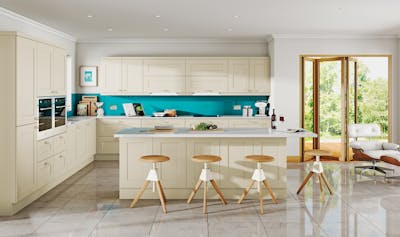How to make your kitchen more energy efficient | More Kitchens
Published: 1 September 2022 · Last Updated: 8 November 2023
In the past year, we have seen a rise in cost in almost everything. And your energy bill has been no different.
The kitchen is one of the areas in your home that uses a high percentage of energy. It accounts for 17% of your electricity bill, according to greenmatch.com
That’s enough to change your mind and make your kitchen more energy-efficient right?
What if we were to tell you that aside from the kitchen contributing a high percentage towards our energy bills, the kitchen appliances we also use have an environmental impact, and, unknowingly, we waste a lot of electricity and gas in the kitchen, meaning we are increasing our carbon footprint.
In this latest blog, we will explore how refurbishing your kitchen into an energy-efficient concept is beneficial for the environment, cost-effective and some of our favourites ideas.
Why should you make your kitchen more energy-efficient?
The right energy-efficient kitchen design and integrated appliances should be considered a long-term sustainable investment. You might not see the results immediately, but over time you'll see that your household carbon footprint will have reduced along with your energy bills.
Most importantly you’ll be having a positive impact on our climate.
How to save energy in your kitchen?
We’re going to help tackle those problems. There are several ways you can save money, decrease your carbon footprint, and have an overall better seamless kitchen experience.
Our expert team of designers and researchers have come together to produce a list of energy-efficient kitchen ideas that you can implement into your kitchen.
Alternatively, if you’re thinking about a full kitchen renovation, and you have energy efficiency in mind, we have a team of specialists who offer a bespoke fully project-managed service in Yorkshire and can deliver the energy-efficient, smart kitchen design you crave.
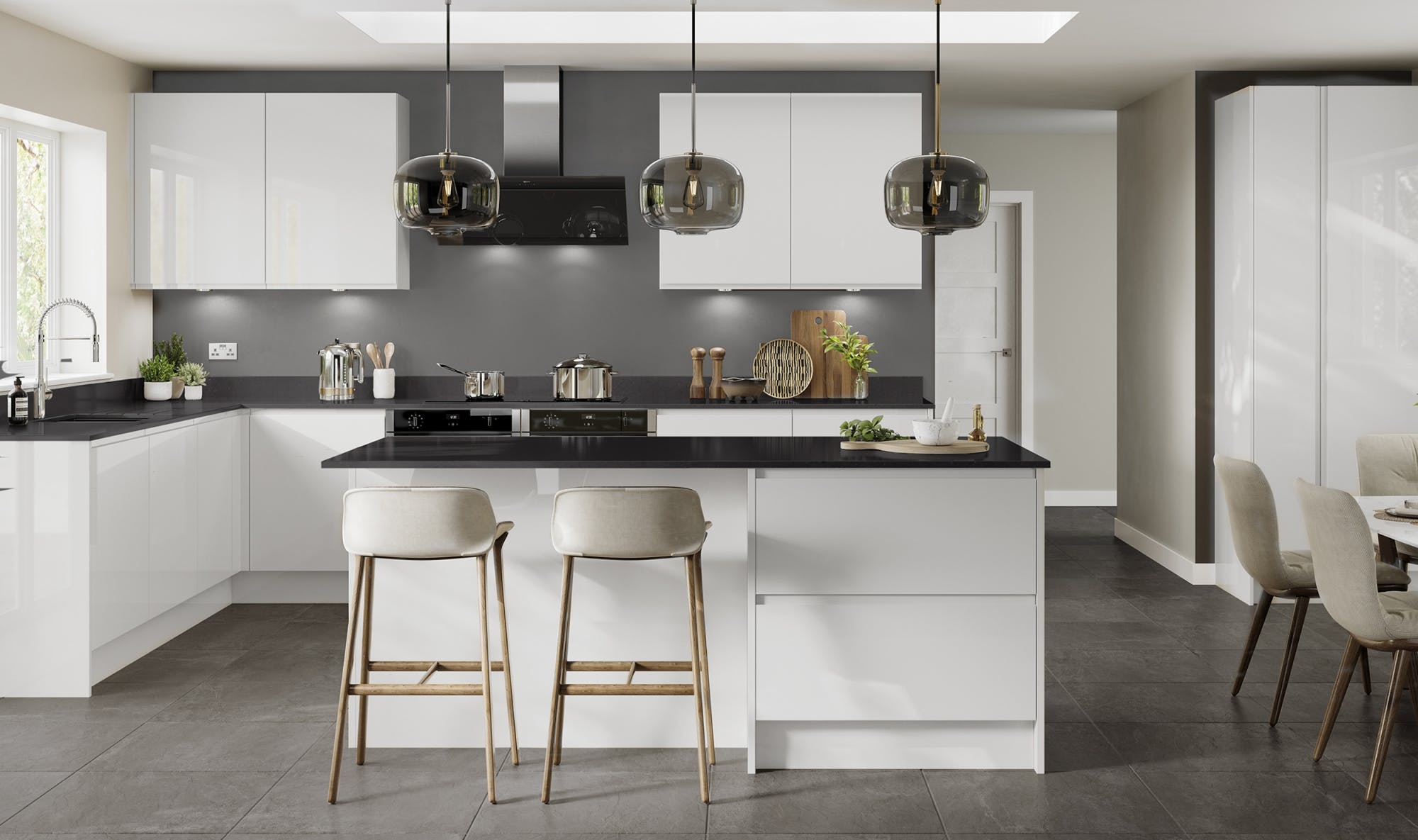
Energy-efficient Ideas
1. Use induction cooktops
A smart kitchen appliance to start us off on the journey to conserving energy in your kitchen.
Induction hobs are the winners when it comes to choosing the perfect stove type for your kitchen design, for numerous reasons.
They transfer heat directly to the cookware, meaning that we bypass the need to heat the surface of the hob. The best part is that you use less energy, with less amount of heat lost.
Induction hobs are also very quick in heating and cooking, reducing the time spent cooking, and to top it all off they’re straightforward to clean. See, we told you ideas that are not only energy efficient but also practical.
.jpg?auto=compress%2Cformat&cs=strip&ixlib=php-1.1.0&s=57d9c9b4ac4bda16351b71c0ad56027c)
2. Optimise fridge and freezer setting
This is a nice and easy idea to help conserve energy in your kitchen. Setting your refrigerator and freezer to the right temperatures would help to unnecessarily consume extra energy.
Setting your fridge between 3-5 degrees and your Freezer at -18 degrees will help to keep your food fresh and won’t use up too much energy.
Concluding this idea you have a range of energy-efficient fridge freezer models with an Energy Star label that are designed to use less energy.
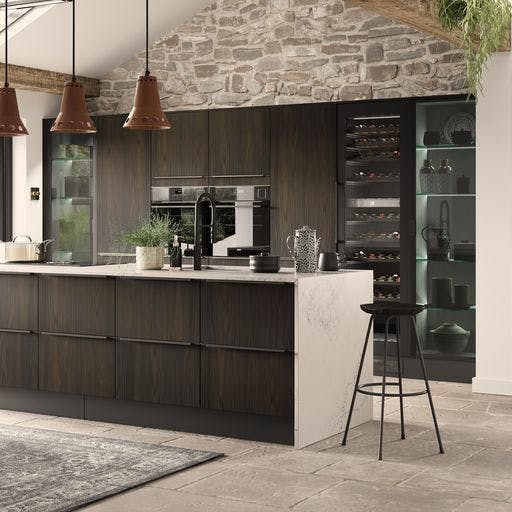
3. Proper dishwashing practices
Using the dishwasher properly and following proper practices can be very energy efficient, saving you money and time in the long run.
Running the dishwasher once it is full once a day on an energy-saving cycle helps to conserve energy in your kitchen. Furthering that, we advise that you let the dishes air dry instead of opting for a heated option.
According to the Energy Saving Trust dishwashers make up 1% of household water usage compared to handwashing which is 4%.
4. Maintain your appliances
As with most things your kitchen appliances can build up dirt over time. Regularly cleaning them is extremely energy efficient for various reasons.
With kitchen appliances having built-in coils, it is more than likely that dirt is going to build up over time, which will result in our appliances having to work a lot harder contributing to a higher energy consumption.
Constantly check the energy settings for the appliances to make sure that they’re energy efficient. You may also find that some of the machines have eco-friendly modes so keep an eye out for that.
.jpg?auto=compress%2Cformat&cs=strip&ixlib=php-1.1.0&s=0d52b49810dbb16b913b03efeda86c1d)
5. Plan efficient meals
Now we move onto an idea that can be easily integrated as part of your day-to-day lifestyle immediately.
Planning and then cooking your meals is part of the journey to becoming overall efficient and saving energy in your kitchen.
Spending less time cooking and doing it all in a batch to then freeze, not only saves you time but consumes less energy. This works well too if you have a dishwasher as you can load it all in one go.
.jpg?auto=compress%2Cformat&cs=strip&ixlib=php-1.1.0&s=22d9f9adb360ab5611ebb35c5b8024f5)
6. Thaw food naturally
Linking with the previous idea, thawing your food might not be the first thought that comes to mind when it comes to saving energy in your kitchen. However, it is much more than that.
Thawing your food naturally at room temperature means that you don’t have to use appliances like the microwave or oven to defrost.
Planning and taking out your food from the freezer and letting it thaw reduces energy consumption. From a different perspective, it also saves you time.
7. Consider a heat recovery ventilation system
Next on our list of ideas is to have a heat recovery ventilation system installed into your kitchen design. An early decision would have to be made during the stages of designing your new kitchen concept, considering it would be part of the refurbishment process.
Despite it being a costly expense, depending on the model, size, and features like most things, you’ll find that it will be a worthy kitchen investment, with many long-term benefits.
Let's clear up how it works exactly.
The system works by capturing heat that has been lost and fresh air that has been filtered from the outside air. A heat exchanger is used in the process to transfer the heat from the outgoing to the incoming air. Therefore, minimising the energy that is lost. This maintains the indoor temperature and maintains quality of air.
If you’re considering this but want further advice before you go ahead and revamp your kitchen we have an abundance of team of professionals on hand that you can call/book a free design appointment and they will advise you further.
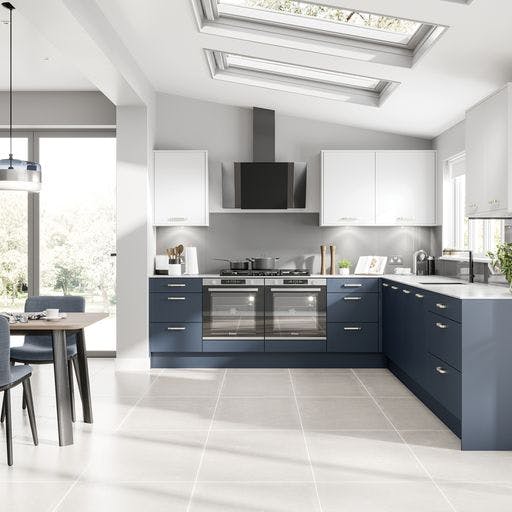
8. Install a high-efficiency exhaust fan
The installation of a highly efficient exhaust fan like the heat recovery ventilation system is designed to improve the indoor air of the kitchen and remove moist and cooking odors.
But how does this kitchen feature save energy in the kitchen?
The design of highly efficient extractor exhaust fans is to use as little energy and remove heat, steam, and pollutants in the kitchen.
As a part of our full design and fit service, our designers will help you choose the most energy-efficient models with some of the models kitted out with components that consume less electricity.
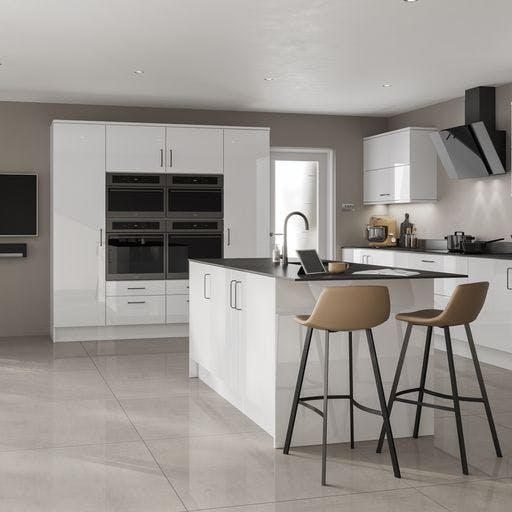
9. Make the switch to LED lighting
Investing in LED lighting can make a modest and significant difference to help you conserve energy in your kitchen and further rein in the costs.
Fitting LED lighting can help reduce your energy consumption and costs in a number of ways. They require less electricity to be powered but produce the same or better-quality lighting.
The lifespan is around 14 years, to break that down further 50,000 hours’ worth of lighting.Pretty good right?
Well, if you were to swap an incandescent 60-watt bulb for an LED bulb, you’d save up to £6 a year per bulb on your bill. Similarly, If you are making the switch from a 35 halogen watt bulb you’d save £4 a year. Every little helps.
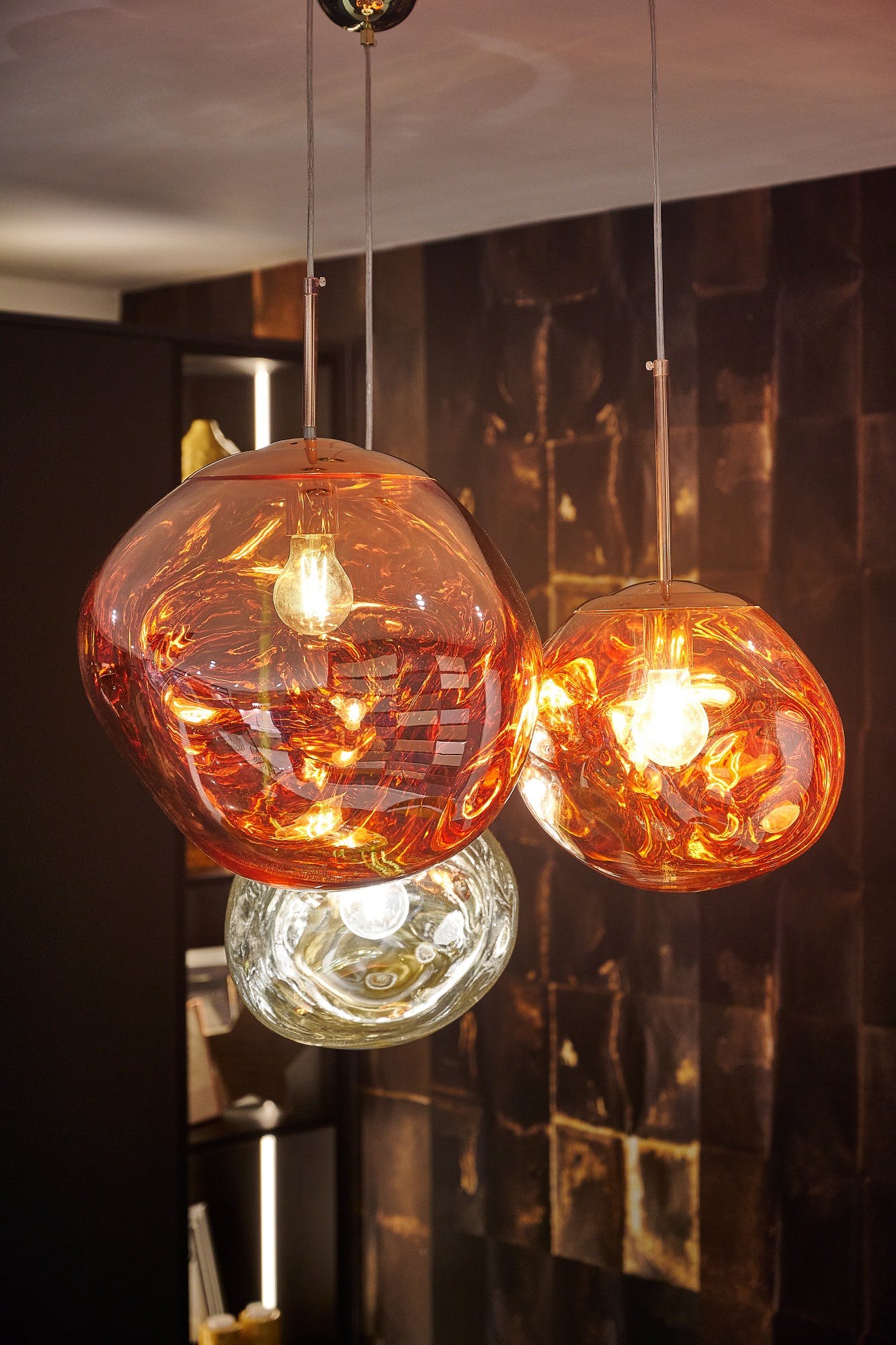
10. Winter's coming... move away from tiled
We’re all looking for ways to naturally retain heat in our homes without the need of having to switch the heating on for long periods of time which is, of course, energy efficient.
How can our choice of flooring help the conservation of energy in the kitchen?
Engineered wood as well as laminate and vinyl both conduct heat well, helping to retain warmth in the home without the need to turn to the thermostat.
11. Energy-saving luxury hot taps
Kettles rank as one of the hardest-working appliances in our kitchens. Imagine saving in two ways, energy and costs by getting rid of the kettle.
Not to stress, you’ll love this idea – Hot taps.
Hot taps draw from your home’s water supply, which is rapidly heated inside an insulated tank stored below the sink. The process is completed by electricity but in comparison to kettles, they use up to 50% less energy while also ensuring that less water is wasted.
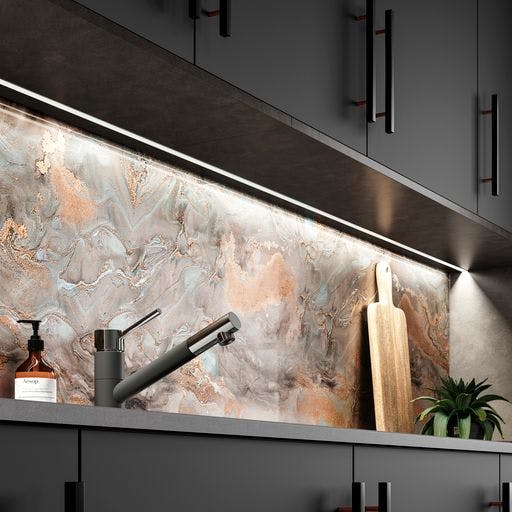
Can we help you make your kitchen energy-efficient as part of a new design?
These are our top 11 ideas for making your kitchen energy efficient, some of which can be integrated as part of your daily lifestyle today.
If you’re in the process of considering a full kitchen refurbishment and you have longevity, sustainability as well and efficiency on your list. At More Kitchens, we offer a full design and fit service, and we can look to deliver your dream bespoke energy-efficient kitchen design.
Contact us today via
telephone alternately
book a free design appointment.
FAQs
Can I make my existing kitchen more energy-efficient without a major renovation?
Certainly! There are plenty of simple energy-saving ideas that you can implement today without a full remodel, including changing your existing lighting to LED lighting. Looking at adjusting the appliance setting will help to make a significant difference.
What's the role of smart home technology in achieving kitchen energy efficiency?
Smart technology allows you to monitor and control your kitchen appliances remotely. This means you’re in control typically of the amount of energy output of those devices, giving you the ability to schedule usage during off-peak hours. To name a few appliances that allow you to control are smart thermostats, plugs fridges, and more.
Are there any additional benefits to making my kitchen more energy-efficient beyond saving on energy bills?
Furthering making your kitchen design energy-efficient and saving you money, some if implemented actually make your overall kitchen experience better, and think that you’re helping to help the Earth’s carbon footprint and sustainable efforts by playing your part.
Share this Post



.jpg?auto=compress%2Cformat&cs=strip&ixlib=php-1.1.0&s=57d9c9b4ac4bda16351b71c0ad56027c)

.jpg?auto=compress%2Cformat&cs=strip&ixlib=php-1.1.0&s=0d52b49810dbb16b913b03efeda86c1d)
.jpg?auto=compress%2Cformat&cs=strip&ixlib=php-1.1.0&s=22d9f9adb360ab5611ebb35c5b8024f5)




